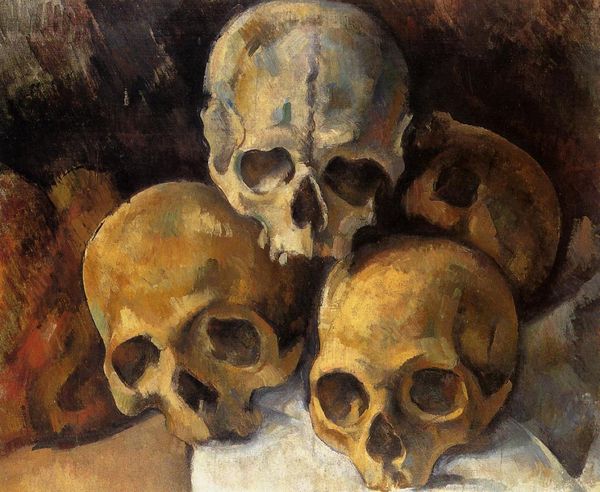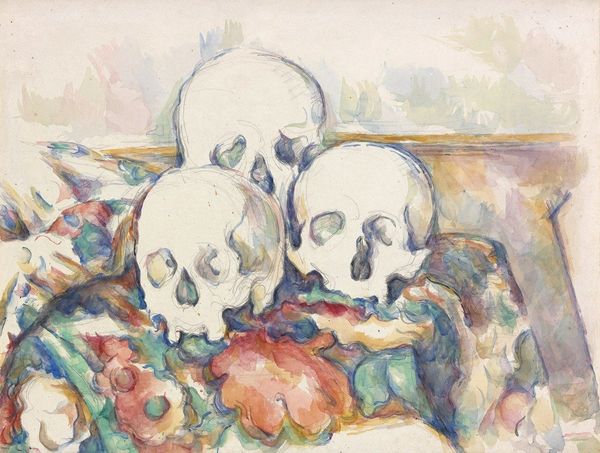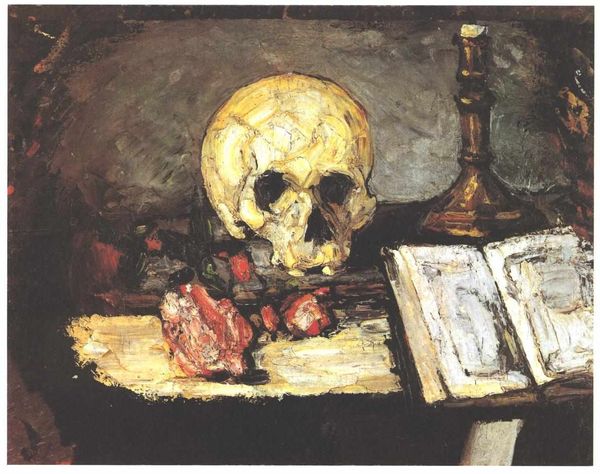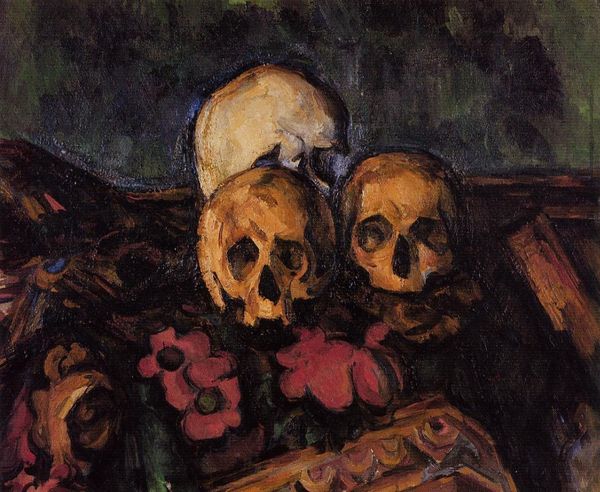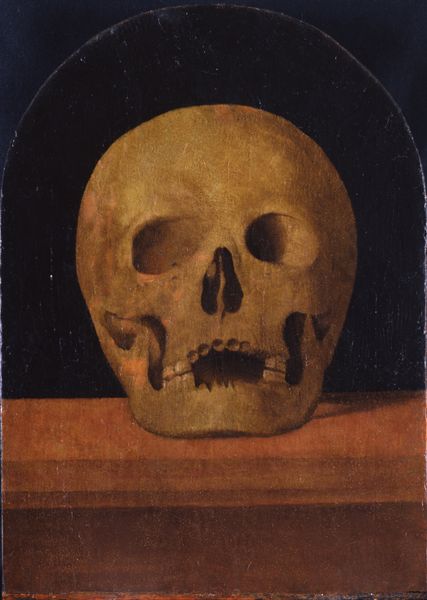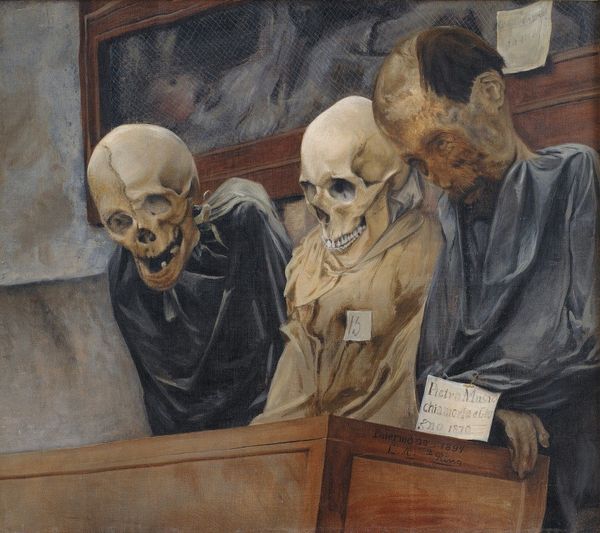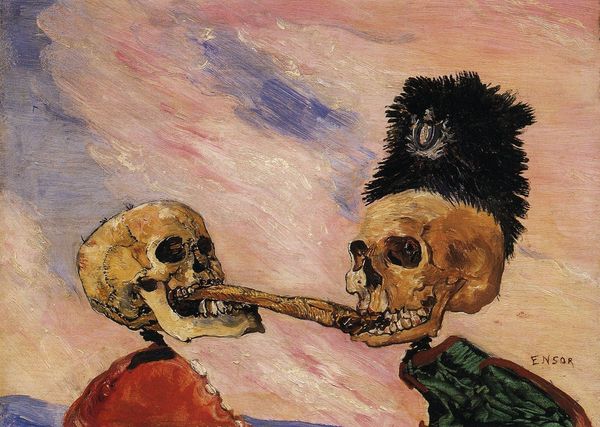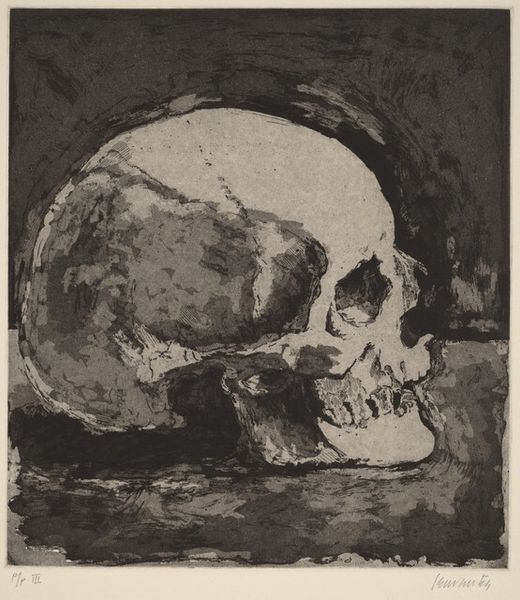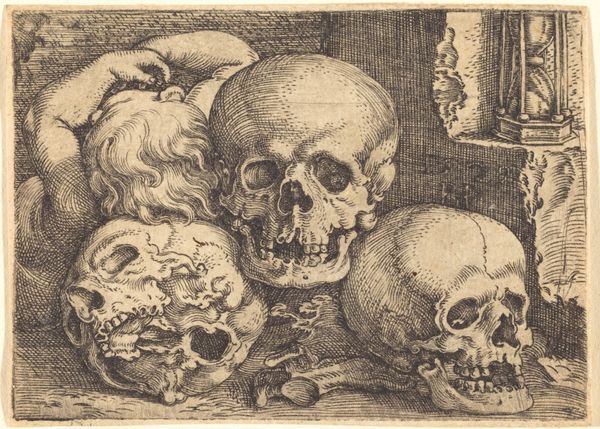
Dimensions: 34.9 x 61 cm
Copyright: Public domain
Paul Cézanne painted "The Three Skulls" with oil on canvas at an unknown date. In the late 19th century, Parisian academies perpetuated an ideal of art, one of flawless beauty and technical precision. Cézanne subverted these standards, emphasizing individual perception and lived experience. The skulls are rendered with loose brushstrokes and earthy colors, their forms solid yet subtly distorted. Cézanne’s skulls evoke the "memento mori" tradition, a reminder of mortality popular in European art since the middle ages. It serves as a critique of the institutions of his time. Cézanne challenges viewers to confront the transient nature of existence, questioning the social structures that seek to impose order and permanence on a world defined by change. By studying Cézanne’s letters, reviews of his exhibitions, and the broader cultural context of late 19th-century France, we see how the artist used his still life to question academic norms. Art, in this view, is not a reflection of fixed ideals, but a dynamic expression of individual and collective experience.
Comments
No comments
Be the first to comment and join the conversation on the ultimate creative platform.
